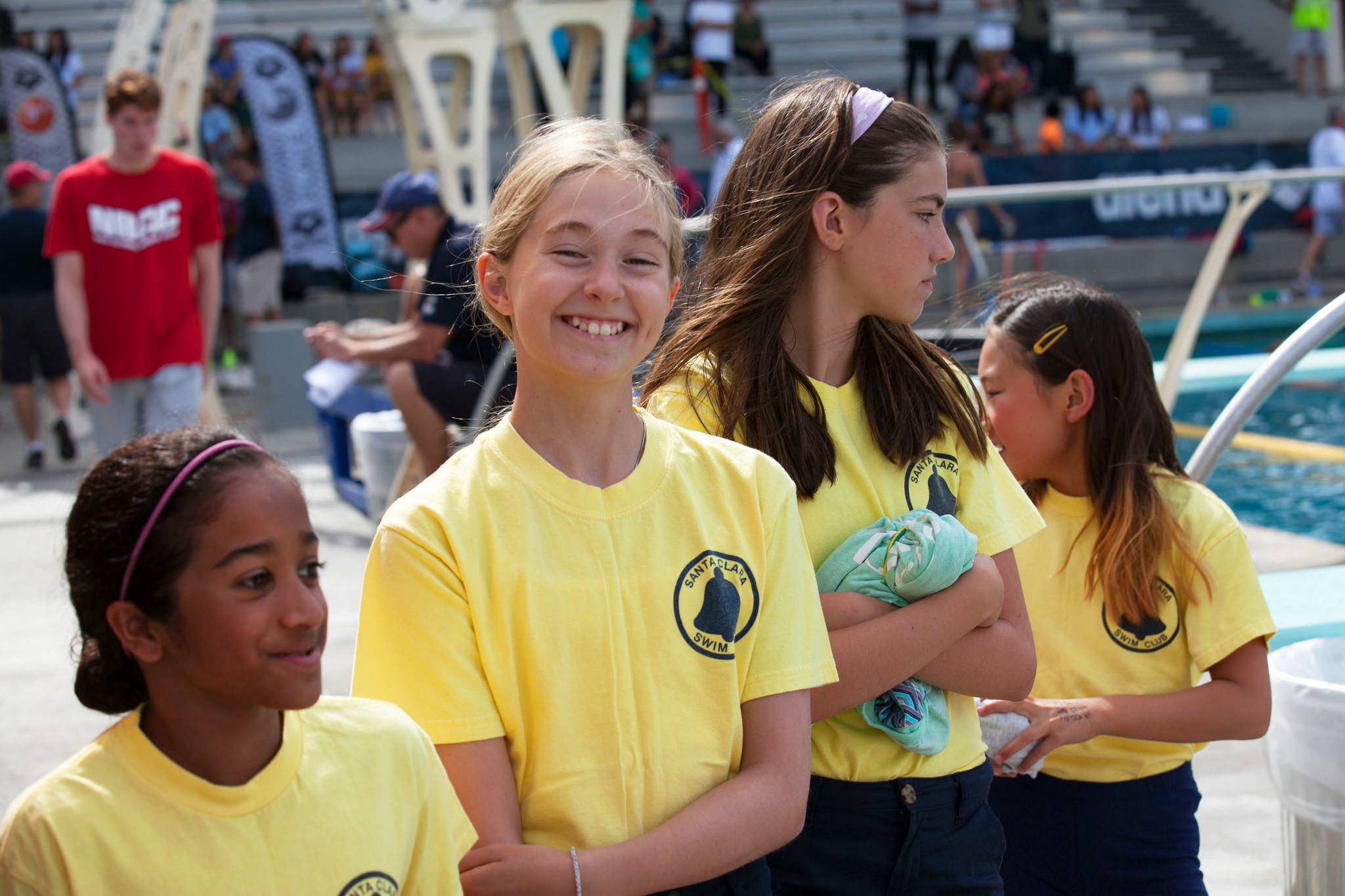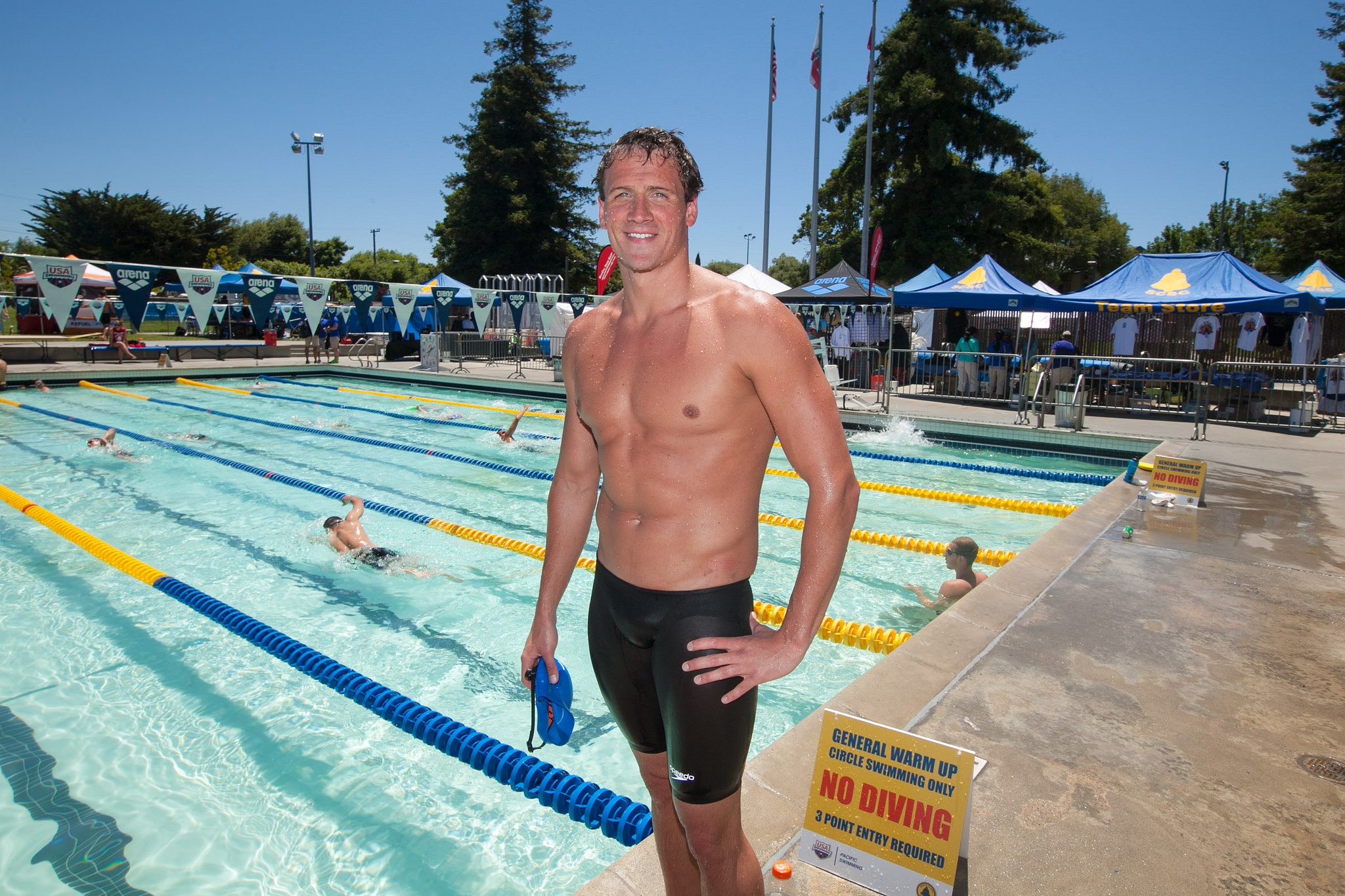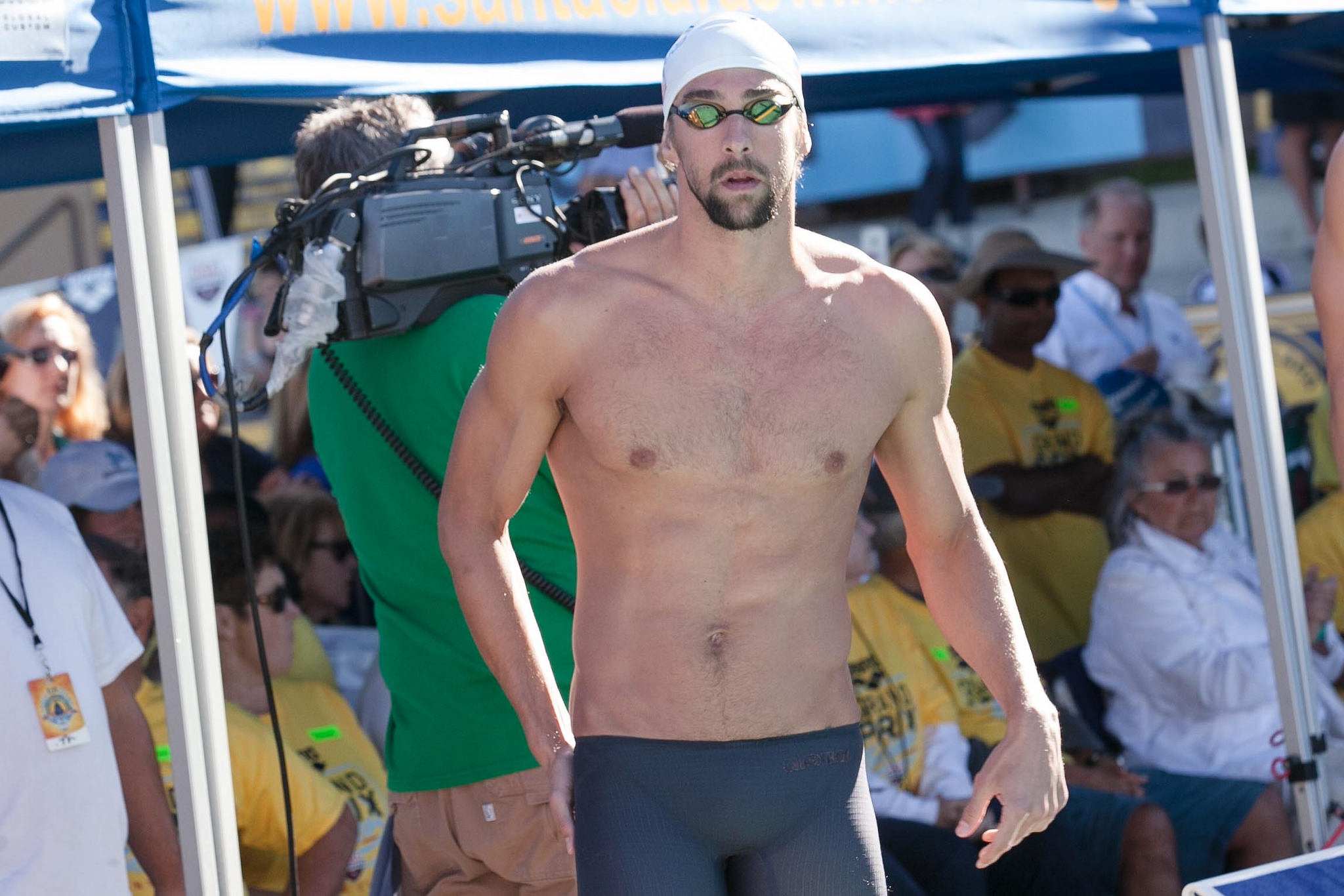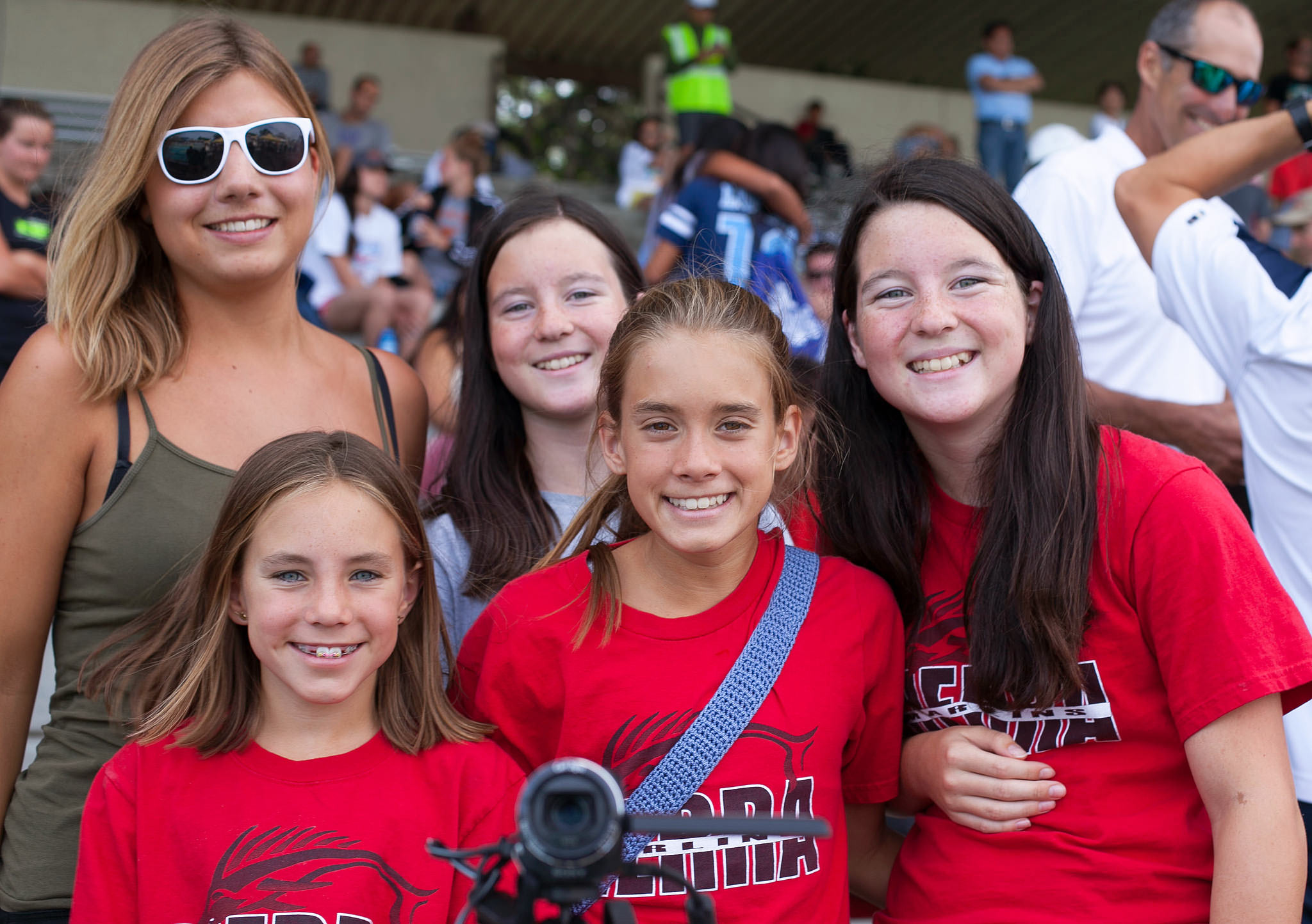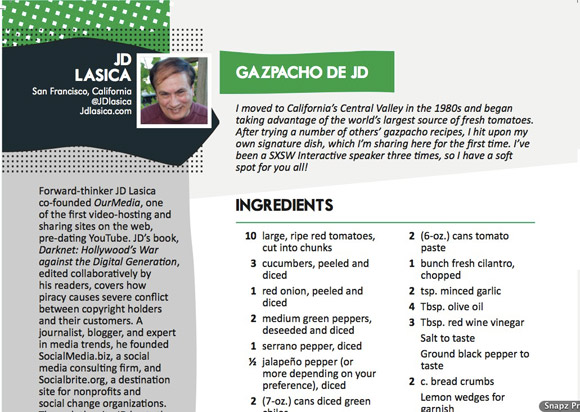The post BingeBooks launches a promising book discovery site appeared first on JD Lasica.
]]>If you head over to BingeBooks and register (for free), you’ll be able to do quite a few cool things:
-
-
Read the opening chapters of tens of thousands of bestselling books from traditional and indie authors — on any device
-
Browse the full collection of books of nearly any author in an easy-to-use interface
-
If they write in series, you can see all their series books in order
-
Ask questions and interact with authors
-
Create visually stunning book lists
-
Join book groups
-
Organize your digital book life
-
Read and write book recommendations
-
Buy what you enjoy, with quick links to retailers for print books, e-books and audiobooks.
-
Find trending deals and discover new releases
-
BingeBooks is also a burgeoning social network, so I hope you’ll follow me on my author page. And if you’ve enjoyed any of my books, please consider leaving a book recommendation for it.

How BingeBooks is different
How is BingeBooks different from Goodreads, BookBub or all the other book sites out there? Let’s count the ways:
- We’re independent. We’re not owned by a mega-corporation, as Goodreads is, or financed by deep-pocketed investors like BookBub. We’re a grassroots enterprise run by authors for readers.
- We’re conversational. We’re out to encourage conversations and interactions between authors and readers. Sites like Amazon actually prohibit authors from responding to readers.
- We have no secret agenda. We’re not a retailer and we’re not here to upsell you or promote products you don’t want. We’re an online community, knowledge base and resource.
- We’re mobile-friendly. Unlike Goodreads, readers can dive into the opening chapters of tens of thousands of books in our catalog on any mobile device.
- We give you a private space. We give every user a personalized private dashboard called My Reads. Save any book, author or article on the site to your own private cubbyhole.
- We’re retailer-agnostic. If you want to buy a book, we give you a choice of several retailers, and we’re not limited to just eBooks.
- We offer an end-to-end experience. You don’t have to hop from site to site to see the book description, read a sample, see readers’ recommendations or listen to an audiobook excerpt.
- We can anchor your reading experiences. We provide the easiest, most modern way to organize your digital book life and show off your expertise by sharing lists featuring beautiful book covers.
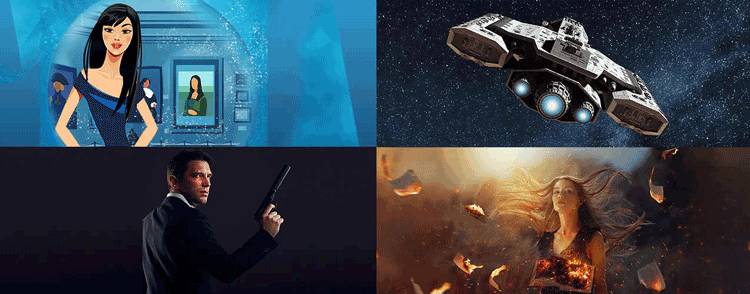
There’s more, but those are the main reasons my fellow authors and I launched the site.
What’s ahead? Onboarding more authors! To be sure, we’re a platform for readers to share book recommendations. But in the coming weeks we’ll also be opening our platform to any author in the world who wants a professional-looking author page and a place to show off their works. For free.
I hope to see you at BingeBooks!
The post BingeBooks launches a promising book discovery site appeared first on JD Lasica.
]]>The post 6 things indie authors should know about audiobooks appeared first on JD Lasica.
]]>INDIE AUTHORS
But there are drawbacks — chiefly, the amount of time, effort and sometimes money it takes to produce a solid recording.
The last time I checked, only about one in 10 indie authors bothers to go through the trouble of producing an audiobook to accompany a new book release. That’s bound to change. More than 67 million Americans now listen to audiobooks each year. Given current trends — particularly consumers’ lifestyle habits, with books consumed on the go and in bits and snatches — some experts predict audbook sales will overtake ebook sales in a few years.
Here’s a 4-minute sample from “Catch and Kill.” Go to the book’s page on Audible.
With that in mind, here are some things I’ve learned along the way now that I have two audiobooks under my belt. We can boil down the audiobook publishing process into these six steps.
Step 1: Get an audiobook version of your cover made
1When I started out, I was befuddled by ACX’s requirement that I upload a square cover for my audiobook. What? Book covers aren’t square! It took a bit of reverse-engineering to turn a traditional book cover into a 2,400 by 2,400-pixel image.
With book two, I paid the design house a little extra for an additional file for the audiobook version. So it pays to work this out with your designer in advance, since you don’t want to be fooling with cover dimensions at the last minute.
Step 2: Choose a platform to create your audiobook
2For ease of creating your audiobook, ACX rules the roost. ACX, Amazon’s Audiobook Creation Exchange, is the easiest way to go for most indie authors. By using it, your book will be for sale on Amazon, Audible and iTunes. That said, ACX is not as drop-dead simple as it should be.
ACX is a sort of marketplace where authors and rights holders can collaborate with narrators and producers to, in effect, self-publish audiobooks. Chances are, this is where you’ll find your narrator if you decide to go that route.
During the production process, you’ll be creating separate audio files for each chapter in your book, as well as front and back matter such as opening and closing credits, any dedication, epigraph and so on. ACX is picky about how each chapter sounds (including things like sound levels and ambient noise), so this should ideally be done in a production studio environment — or a quiet home office.
The author typically acts as a sort of producer-in-chief, so once you’ve completed Step 2 below and have the finished files in hand, you upload them one .mp3 file at a time to the ACX site via a Web interface. Once the staff at ACX reviews the quality, they either greenlight the title or kick it back to you for some tweaks. That’s what happened to us with my first audiobook, and narrator Denise Howell happily made the fixes. The review process took two weeks for my first audiobook and one week for book two, which is why you shouldn’t expect to have your audiobook ready for your book’s launch day.
I wrote about the ACX production process and showed off some screenshots in this post last year. The article also covers Whispersync, Amazon’s coolio technology that lets you read on your phone or device at breakfast, then get in your car and continue listening where you left off, and when you get home, cook dinner while listening on your Echo, all without losing your place.

Step 3: Choose a narrator
3After you’ve written your masterwork, your most important decision comes down to who’s going to narrate the script. To save on costs, many authors choose to do it themselves, and if you have honey-coated pipes, time to spare and the right recording equipment (including a good desktop microphone), then go for it!

(Image via Pixabay)
I went in a different direction. After all, in fiction a voice actor can lend extra depth to a manuscript through a range of voice ages, accents, dialects and genders — something that few authors can pull off.
If you hire a professional, your costs will depend on the length of your book and the hourly rate of your narrator. In my case, for book one I prevailed upon an old friend, Denise Howell, who knows a lot about audio production, given that she’s been hosting the This Week in Law podcast for years. Denise and I came to a financial arrangement where I paid her a lump sum for her narration work, so I’m out of pocket that sum but retain the rights to all royalties going forward (see Step 3), less ACX’s take.
For book two, I decided, like a good startup founder, to do some A-B testing. So I chose a male narrator after reviewing several narrators’ short audio auditions on ACX. You can request sample narrations of one of your chapters, and a half dozen people applied. You get to hear how your work sounds when read by somebody else. In my case, I thought the Audible narrations by Tom Taverna were a good fit for a thriller. We collaborated through ACX and over email exchanges. We agreed to split the royalties, so I paid no production costs. Audible gets 60% share of sales, while Tom and I each get 20% of the royalties. Audible sets its own prices, and you’ll get more from the sale of an audiobook than an ebook.
I’ll know in a year or two which approach — flat payment vs. royalty split — was the better option.
Step 4: Give your book a ‘proof-listen’
4You know how valuable beta readers and/or proofreaders are before publishing your manuscript? The same principle applies to your audiobook. Alas, even though you’re offloading the work of narrating the book, you’ll still need to listen to every spoken word of it. As your narrator records chapters, or perhaps all at once, she’ll send you the completed chapters in the ACX dashboard for you to approve. You’ll want to listen and make detailed notes. Did she mispronounce the name of a character or city? Did she skip over a sentence? This is your chance to “proof-listen” to your audio samples. Both of my books were 11 hours in length, plus it took time to run through two rounds of fixes, so you’ll need to set aside a full day or two.

Step 5: Choose a distribution platform/retail store
5When self-publishing for the first time, every indie author needs to decide whether to go wide or choose Kindle Direct Publishing as well as its KDP Select option, which scores you access to Amazon’s millions of subscribers to Kindle Unlimited. I published both my thrillers, Biohack and Catch and Kill, in Kindle Unlimited (which costs subscribers $9.99 a month).
And now we see the same bifurcation occur in the audiobook world. Audible, owned by Amazon, is the big kahuna of the space, with tons of subscribers paying $14.95 a month for access to its catalog of audiobooks. Unlike the all-you-can-eat buffet of Kindle Unlimited, Audible subscribers are given a credit for one audiobook a month, and you own all Audible audiobooks in your library even if you cancel your subscription, plus you get access to two of six Audible Originals on the first Friday of every month for no additional cost. For authors, if you choose to go with ACX in Step 2, then Audible in Step 5 is part of the bargain.
For those who choose another route, you can opt for a service such as Findaway Voices (in partnership with Draft2Digital, Author’s Republic or other small platforms, which generally let authors set their own prices and distribute their audiobooks across multiple retail channels. One additional downside of using the ACX-Audible duopoly: Your audiobook won’t be available to library listeners.

Step 6: Spread the word
6Once you’re live on retail sites like Audible and iTunes, it’s time to spread the word! If you’re already past your book launch, do you need to create another marketing campaign all over again? Probably not. But you should try to get the audiobook into the hands of audiobook lovers in your genre. Start by claiming the 50 free promo codes that ACX provides you — 25 for U.S. Audible listeners and 25 for U.K. residents.
Next, you’ll need some initial reviews, so go ahead and pony up $12 to take advantage of the mailing list built up by Audiobook Boom!. They’ll circulate your title in their weekly newsletter, and within a couple of days you’ll likely have more than 50 names and email addresses in your Audiobook Boom spreadsheet waiting for you to contact them. For instance, they have 2,600 subscribers signed up for mysteries, 2,500 for thrillers and 1,500 for romance. In return for listening to your audiobook for free, they agree to post a review. (Note that none of your Amazon reviews carry over to your Audible book page.) Importantly, these folks are not just freebie-seekers; you get to check out the audiobook reviews they’ve left for other titles on Audible.
Ready to enter the audiobook world?
No doubt about it, audiobooks are here to stay. And here’s one final interesting trend: Thirty percent of frequent audiobook listeners report using their voice-enabled personal digital assitant, such as Amazon Echo or Google Home, to read an audiobook out loud.
So should you take the plunge or not? Written Word Media advises: “Producing an audiobook runs into the thousands of dollars or requires giving up significant royalties and is still a significant investment for authors. New authors who find the price tag too steep are best off focusing on building their catalog of ebooks first. Authors who are looking to invest in their publishing business should definitely have audiobook expansion on their list.”
Smart advice.
Questions? Have your own advice to share? Leave a comment below.
In our Indie Authors series
- High-tech thriller ‘Biohack’ is now on Audible
- 10 books to make you a better writer
- 8 tips on how to manage a book launch team
- ‘Biohack’ book release: Talking about indie publishing
The post 6 things indie authors should know about audiobooks appeared first on JD Lasica.
]]>The post Virtual reality events usher in a new era appeared first on JD Lasica.
]]>Back then, you would teleport into the designated space (perhaps an open-air amphitheater) and move your avatar around, through keys or mouse clicks, and type out comments and questions for the speaker and fellow participants while your connection went up and down. High-speed Internet was still years away.
It was fun and cool but ultimately clunky and frustrating. Second Life still exists but mostly its best days are behind it.
Well, a decade and several technological epochs later, a new era is about to unfold, an era not of virtual worlds but virtual experiences propelled by virtual reality, augmented reality or a hybrid of the real and virtual worlds called mixed reality.
And a major player in this emerging space will be High Fidelity, which closed a $35 million funding round on Wednesday with the goal of bringing VR to a billion people worldwide.
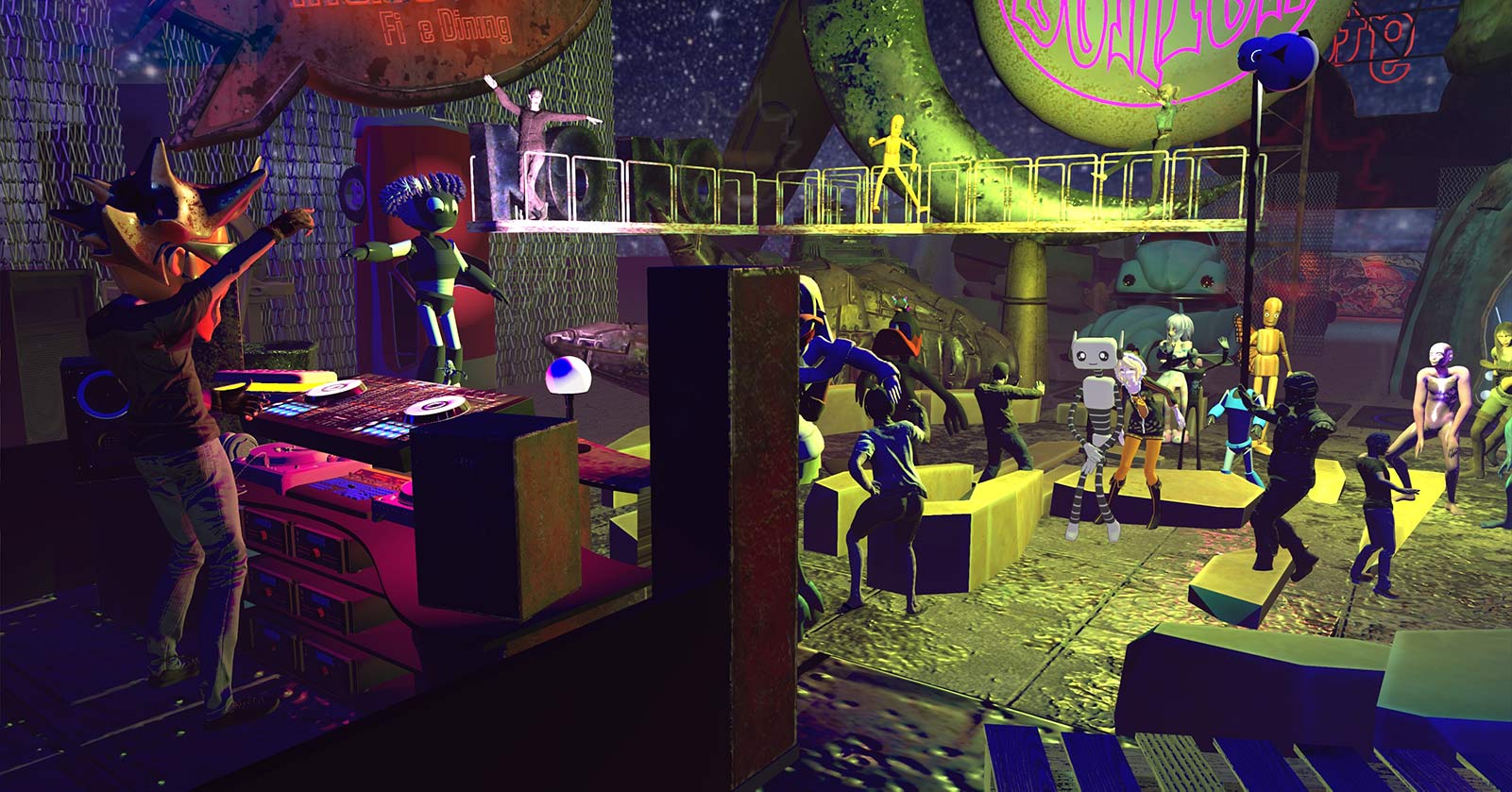
On Friday, I was the sole attendee to visit the High Fidelity studio in San Francisco in person to attend an hourlong conversation between Philip Rosedale (in San Francisco) and author Charlie Fink (in New York), author of the new book Metaverse, about where VR and AR are heading. It was an extraordinarily cool experience.
Rosedale, the founder of High Fidelity (and Second Life before that), and Fink appeared on stage in front of a virtual auditorium of perhaps 30 attendees who were watching, listening and participating from their homes or offices. But instead of watching the events on a computer screen, attendees donned VR goggles — in my case, the latest version of Microsoft’s HoloLens Facebook’s Oculus Rift — and entered the theater in an avatar persona. In my case, I didn’t have time to choose from the selection of custom-made “skins” (see photo below) so I settled into a no-frills default avatar. Jackson Bigelow, High Fidelity’s studio manager, handed me two hand controllers and I was on my way.
I have to say, just as in Second Life, one of the most captivating aspects of being in the Zaru auditorium was the makeup of the crowd. I found myself constantly turning to my right and left to check out the appearance of the other attendees. Chaos, a regular from Munich, pranced to the microphone wearing her ballroom dress bedecked in glowing blue square bulbs. I stood next to a tall anime girl lit up with a fluorescent-white face and yellow stockings. Above us, a dragon reclined on a perch while below us was a robot with monarch butterfly wings glowing bright orange and a Catwoman with lit-up strings of lights entwined around her body.
The coming wave will start with augmented reality
Philip is one of the best, most convivial interviewers/emcees around and he steered the conversation beautifully. And while telepresence and teleconferencing have their place in the corporate world, this setup is far slicker, more inviting and more open to possibilities.
A few snippets from Charlie Fink’s talk:
• “We’re on this march toward this invisible, contextual computing.”
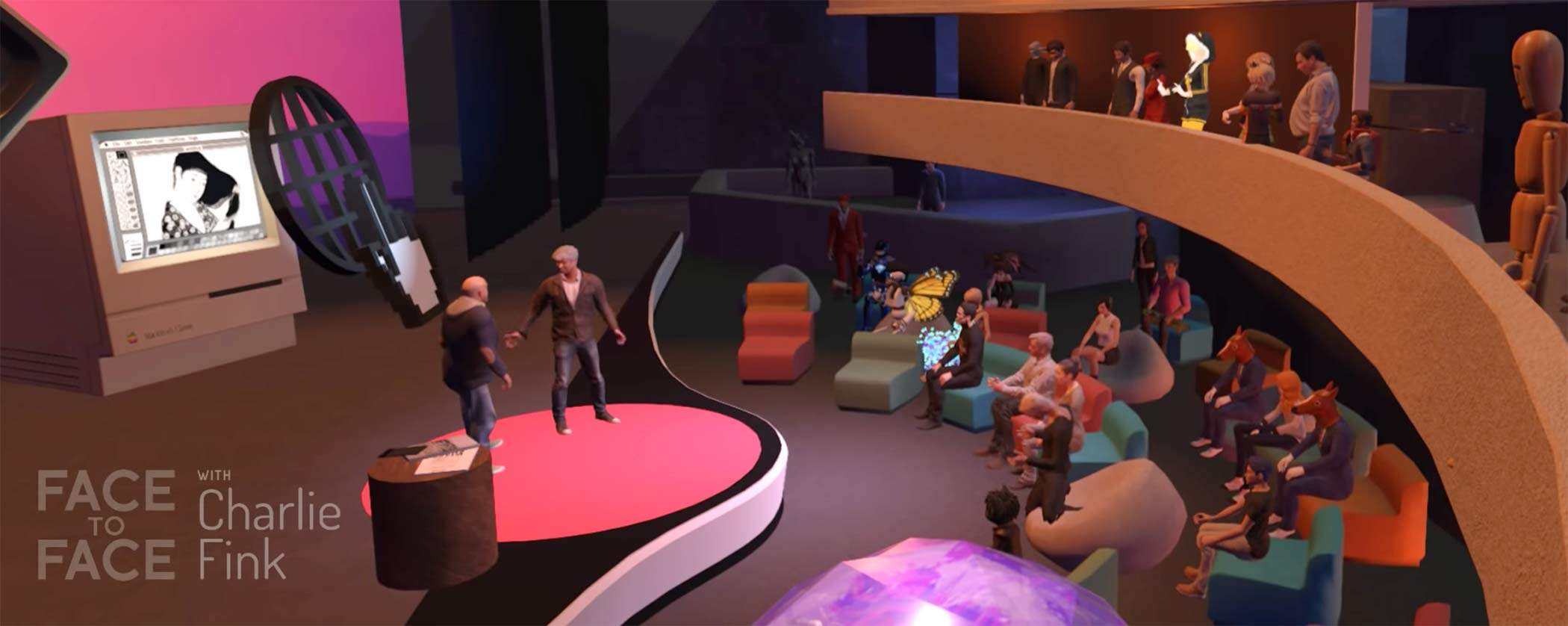
• “Why is everyone so excited about AR? Because everyone’s got one of these. [Holds up smartphone.] So AR is going to take something that everyone’s using today and will make it much better.”
• “Google Maps is about to get about 5,000 percent better thanks to augmented reality.”
• “I’m not a big augmented reality glasses guy because I don’t think that people like walking around with stuff on their heads. That is not something we’re already doing.” (I agree with Charlie and disagree with Robert Scoble about this.) “Getting people to wear head-mounted displays is something that people will have to get used to.”
— author-journalist Charlie Fink
• “My theory about ‘Westworld’ is it’s all being done in VR.”
• “It may be sooner than we think that virtual goods will start to take on extraordinary value.”
Tripping through High Fidelity’s virtual nightclub
Excellent stuff. I suggest that you watch the capture of the VR talk — done with floating bot-cams! — embedded above. (It’s a trick that programmers have been doing in Unity for some time, but it’s still wicked cool.)
Here are some shots I took of the studio and the virtual event that followed, a dance party in High Fidelity’s virtual nightclub Rust with a dozen people — some of whom were dancing on their heads.

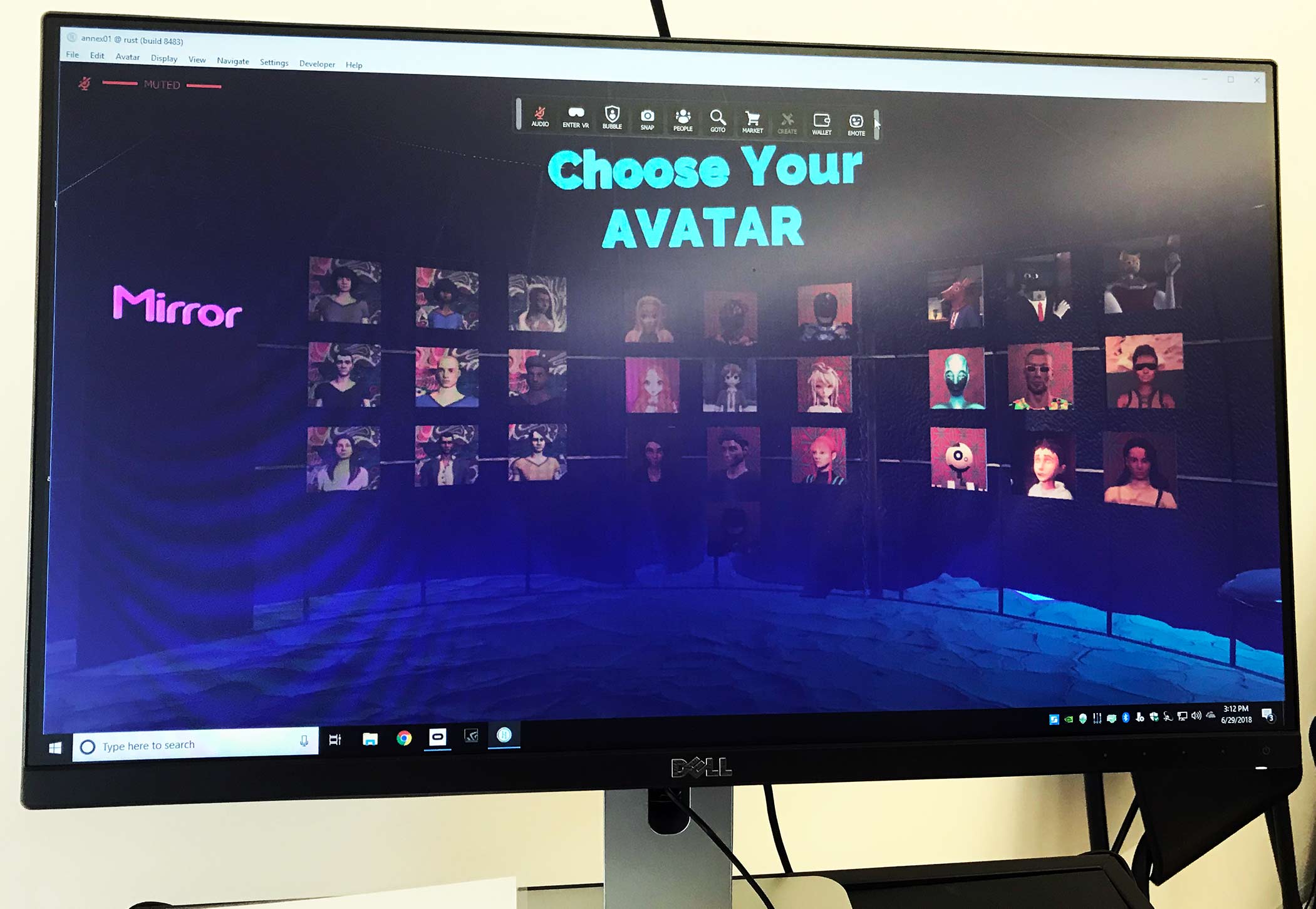
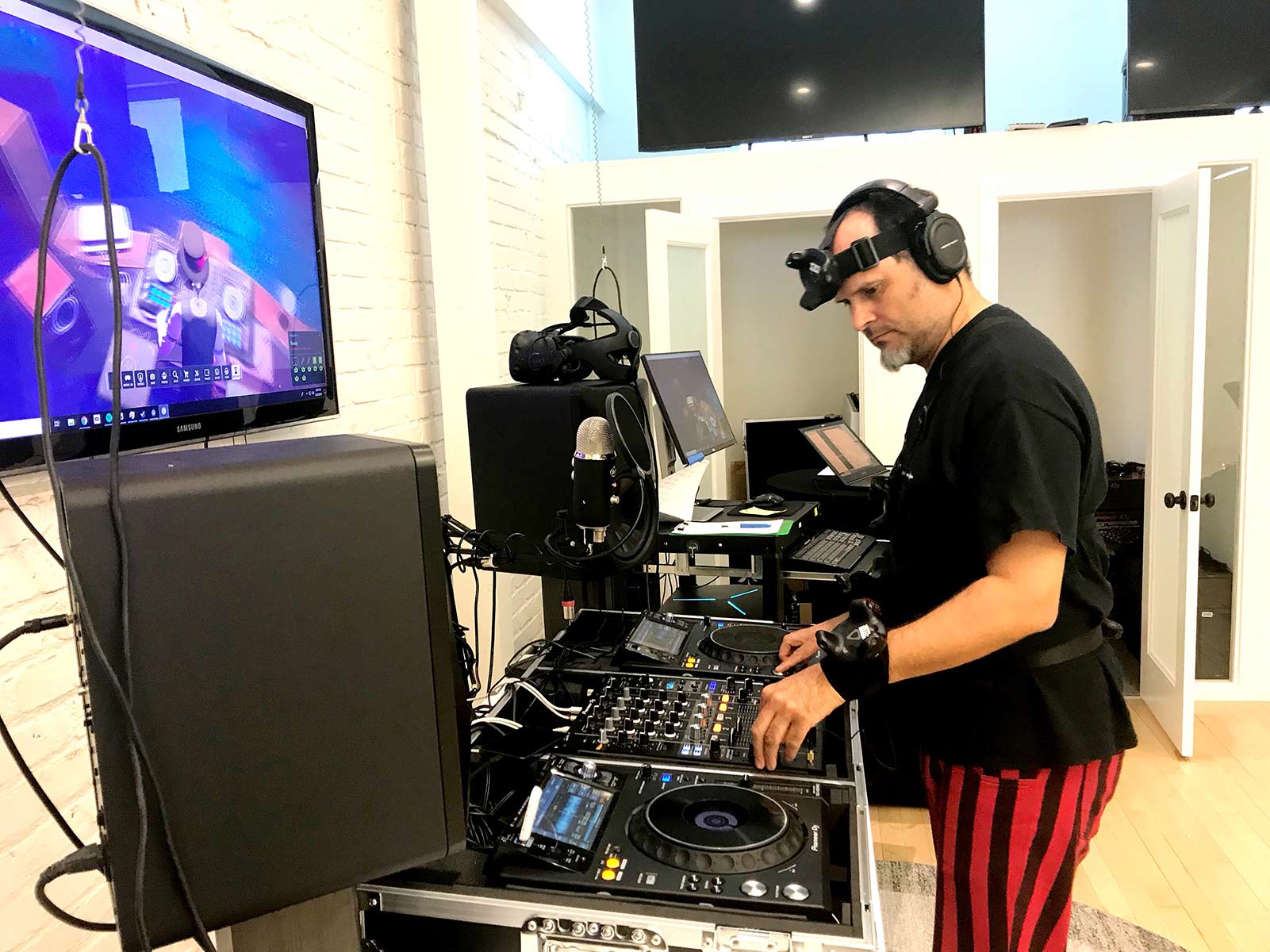
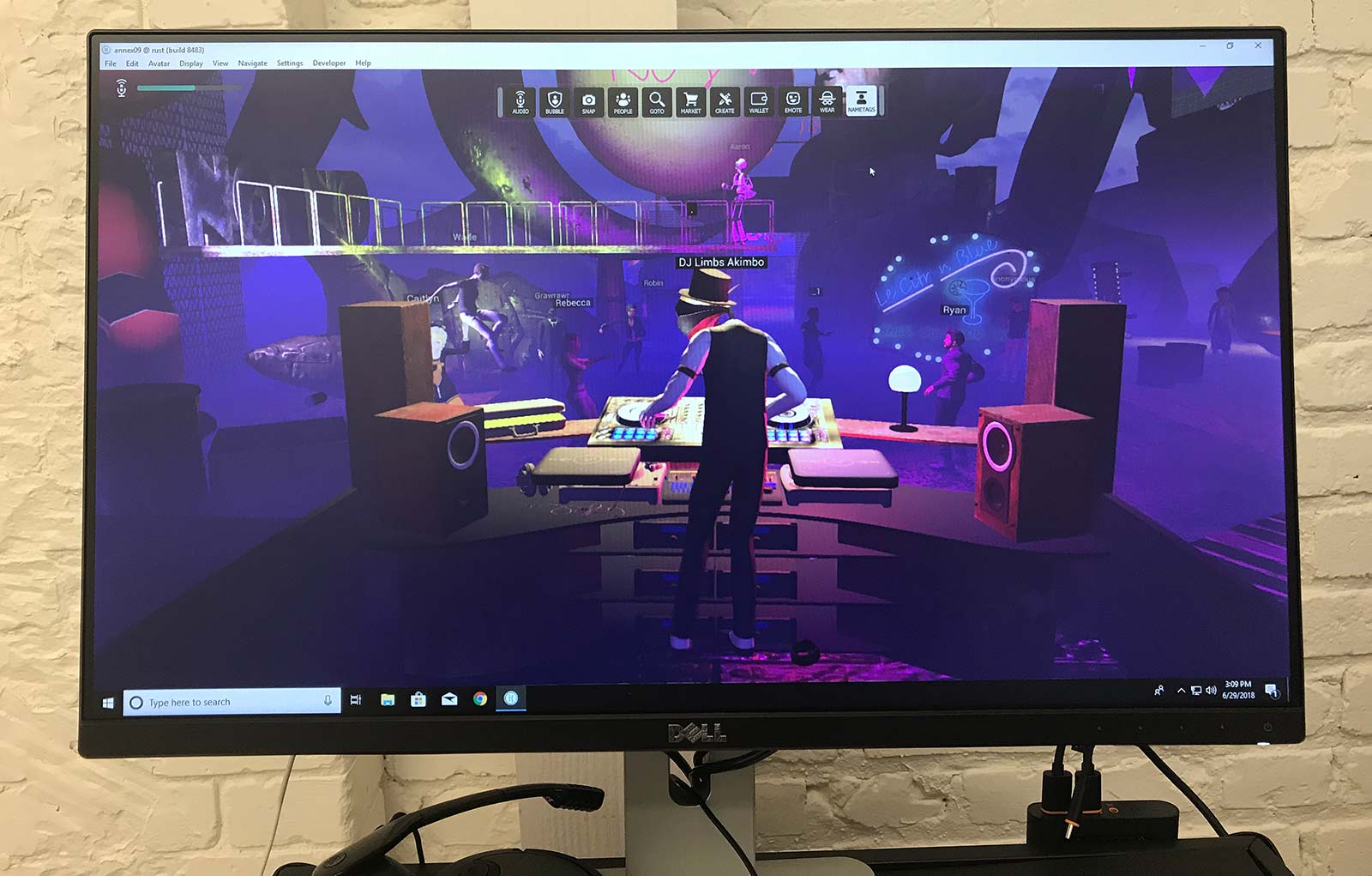
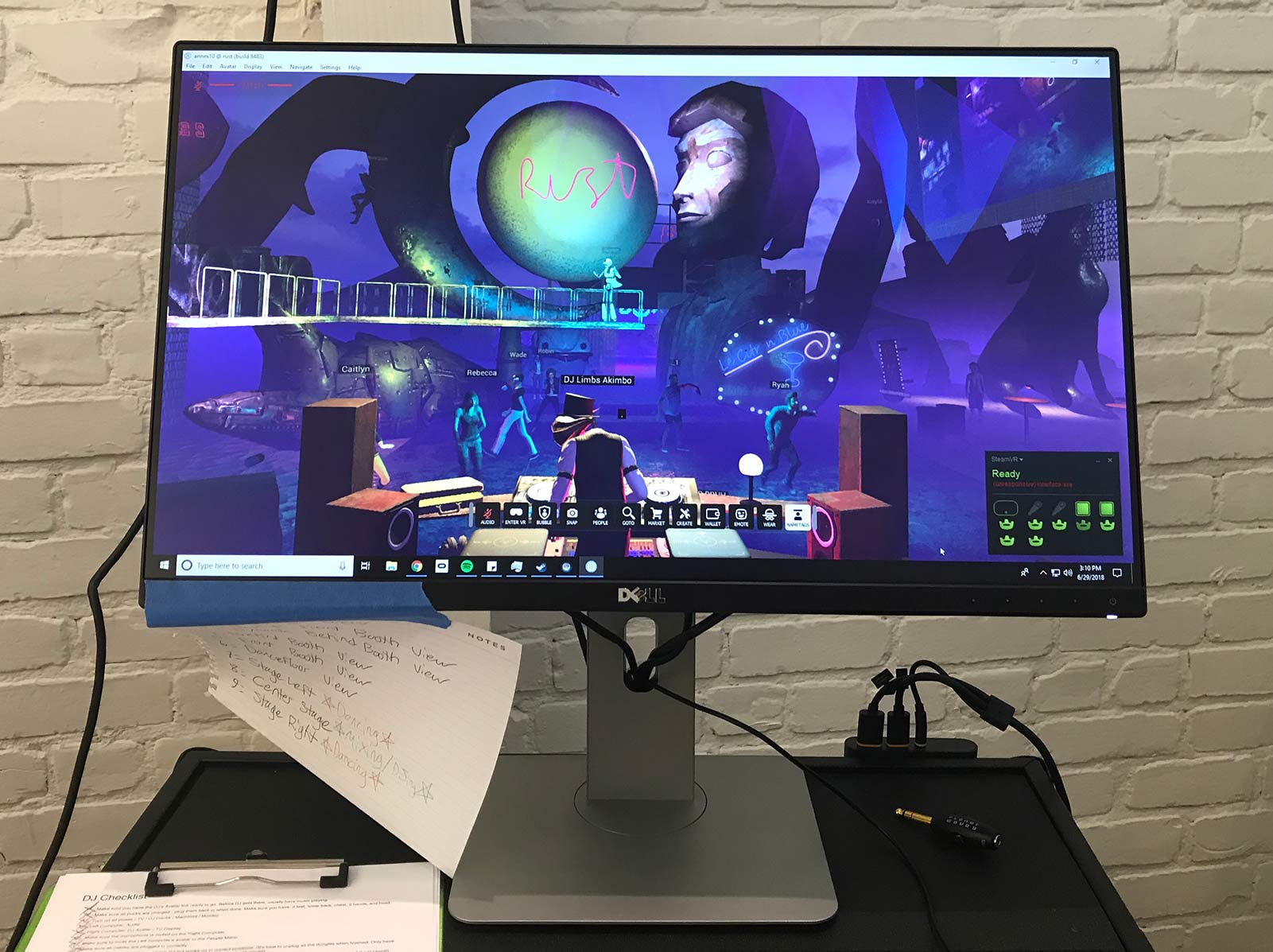
The next High Fidelity event is this Thursday, July 5: Experience & Explore High Fidelity VR With Oculus Rift and Touch.
The post Virtual reality events usher in a new era appeared first on JD Lasica.
]]>The post ‘Biohack’ book release: Talking about indie publishing appeared first on JD Lasica.
]]>Over the next several weeks, I’ll be writing a series of articles about my return to book publishing. It’s a completely different world today than in 2005, when I published “Darknet” and needed an agent (Deirdre Mullane), a publishing house (John Wiley & Sons) and had to wait a full year to see it published.
INDIE AUTHORS
As I said at the outset of the Facebook Live circle-in-the-round conversation, it reminded me of my last book release party in May 2005 — at the now-defunct Varnish Art Gallery in SoMa — but it also showed how dramatically the book publishing landscape has changed since “Darknet” came out.
Back then, after submitting my manuscript to the editors at John Wiley & Sons, I had no say about the title of the book, the book’s cover design, how it would be marketed or just about anything else. The business and marketing processes were opaque, the book contract assigned all intellectual rights to the publisher for something like 30 years and an author would make perhaps 7 percent of the book’s sales in royalties, with the lion’s share going to the publishing house and 15 percent of my cut to my agent.
Well, how times have changed.
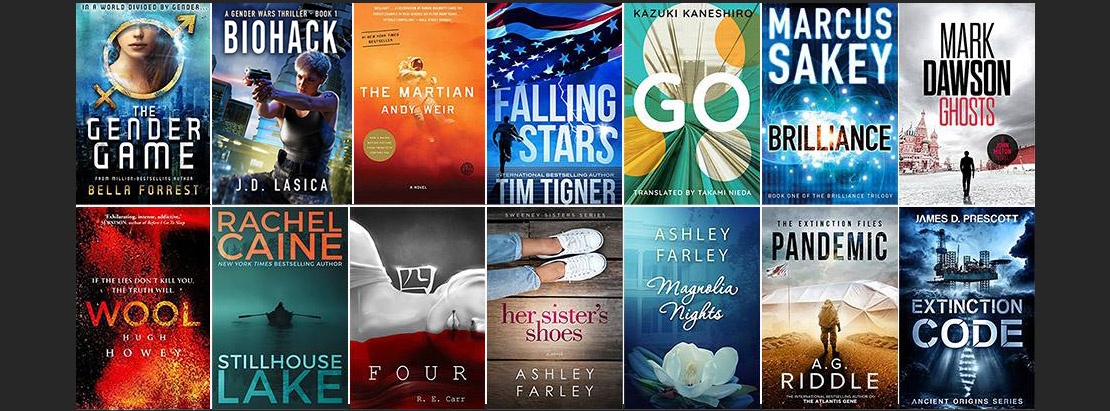
Independent authors, also called self-published authors, now make up an increasing percentage of the book publishing landscape. Look at any of the major book categories on Amazon — romance, science fiction, thrillers and suspense, mysteries — and indie authors dominate many of the top 20 lists. It’s still a struggle to get indie books into bookstores, but even that is no longer the challenge it once was thanks to the rise of services like Ingram Spark.
With moderator Tom Foremski tossing out questions about the creative, business and marketing facets of self-publishing, some of the eight published authors in the room chimed in as we discussed how different writers and authors were picking up the tools available online and handling nearly every aspect of the publishing process without the need professionals in expensive midtown Manhattan offices to do it for us. And from a financial standpoint, a 70 percent royalty for your sales on Amazon through Kindle Direct Publishing, plus a cut of revenue through Kindle Unlimited, sure beats 7 percent.
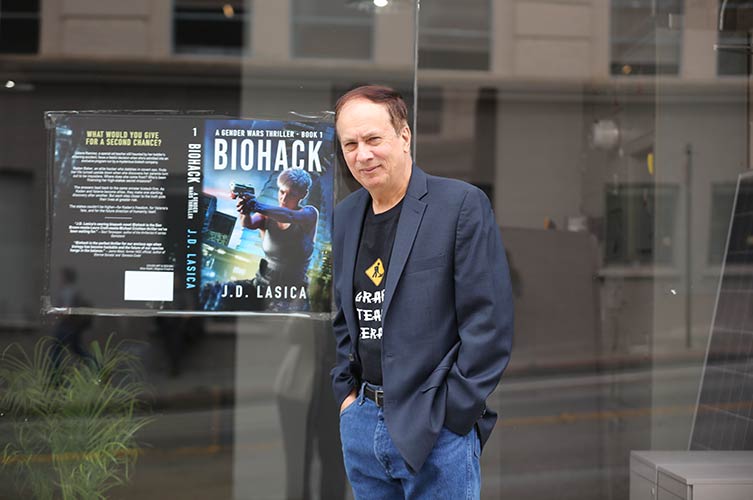
Some of the tools and resources we touched on in the session:
- Scrivener, an inexpensive software tool that helps authors organize their manuscript and that guides them through the creative process
- BookFunnel, an inexpensive service that lets you share copies of your manuscript before publication with a launch team you should be putting together
- Gooodreads is a great place to find beta readers who’ll read early versions of your completed manuscript for free
- Book formatting tools, including Vellum and Polgarus Studio, an Australian outfit I use that makes it impossible to tell your book apart from tiles put out by the Big Five publishing houses
- A host of podcasts to guide new authors through the process, including Mark Dawson’s Self-Publishing Formula and Joanna Penn’s The Creative Penn podcast
- Groups where you can pose questions to other authors, including the Alliance of Independent Authors and dozens of Facebook groups
At the new mini-site I just launched, you can read about the book, see early testimonials, read the first four chapters for free or download a free full-color 60-page freebie that comes with the book, the Hacked Celebrity Files.
Related
- 8 tips on how to manage a book launch team (part 1 in this series)
- Jane Friedman on how to publish an ebook
- Epic guide to self-publishing resources
The post ‘Biohack’ book release: Talking about indie publishing appeared first on JD Lasica.
]]>The post 10 top TV show opening credits of all time appeared first on JD Lasica.
]]>We’re living in perhaps the greatest era of creativity on the small screen* — and that extends not just to TV dramas and comedies but to TV shows’ title sequences, or opening credits, as well. (* TV news? Not so much.)
The top TV opening credits match the mood of the series — perhaps atmospheric, perhaps brooding or avant-garde. They convey a bit of Eye of God context or backstory. Sometimes they impart sly insider bonus that only regular viewers will catch. The best ones not only are visually arresting but connect on a visceral level. They make you feel — awe, dread, wonder, compassion, moral judgment.
I’ve put together this personal list of my 10 favorite TV opens of all time. See if you agree or disagree with these picks, or share your own favorites!
Game of Thrones
1Game of Thrones will air its seventh season starting July 16 (winter is drawing nigh) before concluding with its eighth and final season next year. The opening sequence continues to mesmerize with its imagery of dragons, steel and wild deer (House Baratheon’s sigil is a black stag). There’s no one opening intro, as halfway through the credits the map displays the specific lands and topography where the action in the current episode takes place.
Mad Men
2Mad Men had an up-and-down seven-year run, and it resonates even more profoundly now in the age of our Pussy Grabber In Chief. But one of the best things about the show was its opening sequence, an homage to Willy Lomanesque desperation and moral void mixed with fantastical advertising imagery, allusions to alcoholism and shattered families and the vibe of an omnipresent patriarchal era that has not yet left us.
True Detective (season 1)
3The first season of “True Detective” (2014–2015), starring Matthew McConaughey and Woody Harrelson, shot out of nowhere to become one of the most riveting series on TV. Could they keep it up in season two? No. But the first season’s credits still amaze. They messed with the credits starting with season two and it just wasn’t as powerful.
The Sopranos
4“The Sopranos” (1999–2007) was quite simply my favorite TV series of all time. I miss David Chase’s genius dialogue, James Gandolfini’s impish smile belying a darker impulse and Edie Falco’s (Carmela) dead-on New Jersey accent. More than any other show, “The Sopranos” is about place, and the opening sequence captures that perfectly. Interesting factoid: In the original sequence you would see the World Trade Center in Tony’s rear view mirror, but the WTC was edited out from 2002 onward.
The Twilight Zone
5One of the epic sci-fi series of all time, “The Twilight Zone” (1959–1964) was a surreal blend of science fiction, fantasy and supernatural horror packaged neatly in a chilling anthology series narrated by the super-cool Rod Serling. The show set the stage for “Star Trek” and much of today’s brew of paranormal storytelling. You’re traveling through another dimension, a dimension not only of sight and sound but of mind; a journey into a wondrous land whose boundaries are that of imagination. Your next stop…the Twilight Zone. Each of the show’s five seasons had somewhat different introductions.
True Blood
6I ran hot and cold with “True Blood” (2008–2014). The show was a bit too bloody for my tastes and the plot too uneven as we followed halfling Sookie Stackhouse (Anna Paquin) and shapeshifter Sam Merlotte (Sam Trammell) through a bayou landscape of violence, family dysfunction, drug addiction and faith lost and restored. But the opening credits were awesome, particularly the religious imagery.
The Simpsons
7“The Simpsons” (1990-present) has lost some of its edge in recent years, but if you’re a fan, you have to pay attention to the credits each week to see exactly what Bart scrawls on the chalkboard and what will await the family on the communal couch. Above is the opening sequence from Season 1 in 1990.
The Man in the High Castle from Patrick Clair on Vimeo.
The Man in the High Castle
8This introductory sequence from the uneven but fascinating Amazon Prime series “The Man in the High Castle” still sends chills down my neck, especially now that we’re living in an era of alternative facts. The trippy premise for this three-season TV adaption of Philip K. Dick’s novel was that the Nazi Germany and Imperial Japan won WWII, and that a handful of Resistance fighters had one surviving copy of a vintage film containing an alternative history in which the Allies won the war.
Six Feet Under
9One of my all-time favorite shows, “Six Feet Under” (2001-2005) was laced with irony and dark situational humor. As Wikipedia tells us, “the show approaches the subject of death through the eyes of the Fisher family, who owns and operates a funeral home in Los Angeles. Peter Krause stars as Nate, who reluctantly becomes a partner in the funeral home after his father’s death.”
Westworld
10If you haven’t caught HBO’s “Westworld” yet (its first season ran October to December 2016), you should, if you’re a fan of near-term science fiction and unexpected plot twists. The title sequence nicely hints at the genre-bending mix of sci-fi synth, Old West twists and dramatic story arcs. The player piano — the first robot? — is genius.
Honorable mention
“The Mary Tyler Moore Show” (1970–1977). There’s nothing dazzling about this 55-second intro, but the groundbreaking series helped to change television and the perception of modern women in society. Moore’s death last year recalls that memorable, iconic cap flip at the credits’ end.
- Friends (1994–2004)
- Southland (2009–2013)
- Downton Abbey (2010–2015)
- The Office (2005–2013)
- House of Cards (2013-present)
- Mission Impossible (1966–1973)
- Cheers (1982–1993)
- The Gilmore Girls (2007–2014)
- Flight of the Conchords (2007–2009)
- Rizzoli & Isles (2010–2016)
How about you? Which are your faves?
J.D. Lasica was a features editor at the Sacramento Bee before he entered the startup world.
The post 10 top TV show opening credits of all time appeared first on JD Lasica.
]]>The post Book review: ‘A Crack in Creation’ appeared first on JD Lasica.
]]>Authors: Jennifer A. Doudna & Samuel H. Sternberg
My rating: ☆☆☆☆☆
Publisher: Houghton Mifflin Harcourt
Release date: June 13, 2017 on Amazon
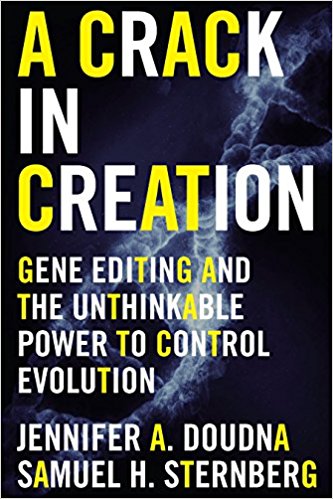 More often than not, it’s difficult to determine which new titles will have staying power 10, 20 or 50 years from now. But “A Crack in Creation” deserves to be on any short list of decidedly important nonfiction books of 2017.
More often than not, it’s difficult to determine which new titles will have staying power 10, 20 or 50 years from now. But “A Crack in Creation” deserves to be on any short list of decidedly important nonfiction books of 2017.
The reason is not simply because of the authors’ pedigree — co-author Jennifer Doudna is credited as the chief pioneer behind CRISPR, the potentially world-changing gene-editing technique. The book’s impact is also buttressed by the authors’ scientific rigor, deeply felt passion, and understanding of the world-changing consequences of their research.
Doudna and Sternberg’s “A Crack in Creation” is two books in one. The first third is a short primer on genetic engineering and the scientists who’ve advanced the science over the years. While the attention to detail and footnote-rich documentation is commendable, the lay reader will be forgiven if she skips through some of the dry backstory to get to the good stuff in the remaining two-thirds of the book. Because few of us have yet to reckon with the significant issues raised by the recent breakthroughs in CRISPR research, which only came to light in 2012.
As the authors write:
Many experts predicted that CRISPR would be a research biologist’s dream come true, enabling experiments that one could have only fantasized about doing before. I imagined that it would democratize a technology that had once been the privilege of the few. … Now, CRISPR seemed to be on everyone’s lips and the topic of every conversation. And yet it was still only the tip of the iceberg. …
As I sat on the plane flying back to San Francisco after that first trip to Cambridge, I could already see a new era of genetic command and control on the horizon—an era in which CRISPR would transform biologists’ shared toolkit by endowing them with the power to rewrite the genome virtually any way they desired. Instead of remaining an unwieldy, uninterpretable document, the genome would become as malleable as a piece of literary prose at the mercy of an editor’s red pen.
Doudna’s initial worries centered on whether scientists would prematurely use CRISPR without proper oversight or consideration of the risks and whether bad actors might use the technology for nefarious purposes. So she took the first halting steps to begin a public dialogue about the implications of CRISPR research, first by organizing a roundtable of 17 scientists in January 2015 and then a larger gathering later that year to discuss gene therapy and germline enhancement. Those discussions continue to this day.
Meantime, other researchers and entrepreneurs got busy. Entire companies have sprung up with the mission of conquering such genetic disorders as cystic fibrosis, sickle cell disease and Duchene muscular dystrophy. The reader roots along with the authors in cheering on what amounts to the beginning of what might be called “the precision genetic medicine revolution.”
Scientific jargon kept to a minimum
It’s helpful that the authors translate scientific arcana into everyday language, as when they mention that a snippet of DNA being modified by CRISPR is “roughly one one-thousandth the width of a human hair” or that a molecule “acted like a set of GPS coordinates” to guide the replacement DNA to the right spot or when referring to an enzyme as a “motorized hedge clipper.”
Many readers will be interested in not today’s practical applications in the lab but in what tomorrow may herald. Count me in the latter category, as I just finished writing a suspense novel with CRISPR at the centerpiece. What’s so fascinating about the technology’s future prospects? The authors write:
In the future, parents may be offered the option of selecting for traits that go beyond disease susceptibility and gender and cross into areas like behavior, physical appearance, or even intelligence. The list of known associations between certain gene variants and a diverse list of traits continues to grow, and as the PGD technology improves further, what’s to stop fertility clinics from consulting this genetic information so they can offer their consumers even more choices when it comes to selecting the most desirable or “best” embryos?
Entire conferences and mountains of newsprint will be devoted to dissecting the implications of CRISPR usage on early stage human embryos in the decades ahead. The door has just been cracked ajar.
Where does Doudna, the progenitor of CRISPR, come down on the ethical scales?
I don’t believe there’s an ethical defense for banning germline modification outright, nor do I think we can justifiably prevent parents from using CRISPR to improve their chances of having a healthy, genetically related child, so long as the methods are safe and are offered in an equitable manner. … [But we also need to] redouble our commitment to building a society in which all humans are respected and treated equally, regardless of their genetic makeup. …
Advances in gene editing are enabling us to rewrite the very language of life—and putting us closer to gaining near-complete control of our genetic destiny. Together, we can choose how best to harness this technology There’s simply no way to unlearn this new knowledge, so we must embrace it. But we must do so cautiously, and with the utmost respect for the unimaginable power it grants us.
Well said. The authors smartly observe that society as a whole needs to be in on the decision on whether to move forward with certain aspects of the gene-editing revolution, and that scientists need to demystify the technology so the public can “understand their implications and decide how to use them.” Let the robust debate begin.
The post Book review: ‘A Crack in Creation’ appeared first on JD Lasica.
]]>The post Photos of world-class Olympic swimmers appeared first on JD Lasica.
]]>You don’t get a chance to yak it up at length with these world-class Olympic athletes — after all, they’re there to compete — but it’s been fun to exchange a few words with Missy Franklin, Ryan Lochte and some of the other swimming greats. If you watch the Olympics, you’ll be familiar with many of these names. Here are some of my favorite shots:
I don’t have the heavy-duty equipment of the photographers shooting for the Associated Press, Getty Images, Reuters or San Jose Mercury News, but my Canon 5D Mark III with a Canon 70-200mm telephoto lens gets me by.
For a complete look, here are my swim meet photo galleries on Flickr:
- 2007 & 2008 Santa Clara swim meets with Michael Phelps, Natalie Coughlin, Tara and Dana Kirk, Brendan Hansen, Amanda Beard, Rebecca Soni, Brent Hayden
- 2009 Santa Clara swim meet with Michael Phelps, Ryan Lochte, Dana Vollmer, Laura Sogar, Summer Sanders
- 2010 Santa Clara swim meet with Ryan Lochte, Dana Vollmer, Laura Sogar, Elizabeth Beisel
- 2011 Santa Clara swim meet with Michael Phelps, Ryan Lochte, Missy Franklin, Natalie Coughlin, Stephanie Rice, Brendan Hansen, Dana Vollmer, Taehwan Park, Elizabeth Beisel
- 2012 Santa Clara swim meet with Michael Phelps, Natalie Coughlin, Stephanie Rice, Dana Vollmer, Scott Clary, Bronte Baratt
- 2013 Santa Clara swim meet with Ryan Lochte, Missy Franklin, Matt Grevers, Jessica Hardy, Cullen Jones, Connor Jaeger, Dana Vollmer, Elizabeth Pelton, Aaron Piersol
- 2014 Santa Clara swim meet with Michael Phelps, Missy Franklin, Chase Kalisz, Connor Jaeger, Elizabeth Biesel, Laura Sogar
- 2015 Santa Clara swim meet with Tyler Clary, Laura Sogar, Rowdy Gaines
- 2016 Santa Clara swim meet with Nathan Adrian, Maya DiRado, Josh Prenot, Tom Shields, Anthony Ervin, Emily Seabohm. Ryan Murphy, Jessica Hardy, Sun Yang and Emma McKeon
- 2017 Santa Clara swim meet with Nathan Adrian, Katie Ledecky, Conor Dwyer, Tom Shields, Abbey Weitzel, Kevin Cordes
The post Photos of world-class Olympic swimmers appeared first on JD Lasica.
]]>The post A glimpse of the VR deluge ahead appeared first on JD Lasica.
]]>OK, you’ve heard about this virtual reality thing and know something big is coming down the road, but what is it, how big will it be and is it worth paying attention to?
Last night I wandered out to Shasta Ventures in South Park, the longtime epicenter of the tech revolution in San Francisco, for VR Tuesday #9, the ninth monthly gathering dedicated to unpacking the world of virtual reality, augmented reality, mixed reality and the digital 3D world. Founder Jacob Mullins, a partner at Shasta Ventures, brings in three entrepreneurs or developers every month to talk about the real-world, commercial applications of this stuff.
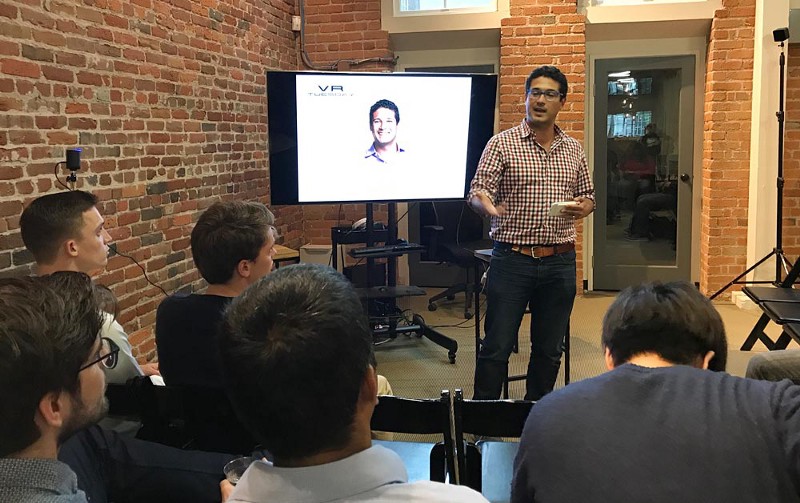
The event was well attended with about 40 participants. The male-to female ratio was about 4–1 — but since it’s open to everyone, you can’t complain if your gender isn’t turning out. (No reason it shouldn’t be 50–50.) What you should do is bring a woman friend to the next event.
(Side note: I continue to be disappointed by the falloff in the number of people who blog, or live-tweet, cool public events like this. While it was streamed on Facebook Live, Facebook makes you jump through ridiculous hoops to embed a video; so just go here and then scroll down to each presentation.)

SayDuck AR
Silvain Toromanoff, the first speaker, is product lead at Sayduck, the leading platform for AR and 3D for home decor. With more than 4,000 photorealistic products available in 3D, Sayduck enables consumers to visualize furniture in their homes thanks to a mobile AR app.
“Furniture is a good use case for AR,” Toromanoff said, and he’s right. Instead of buying furniture or wall hangings and taking them home to see how they’ll look in your house, in just a few years’ time millions of us will instead be donning AR goggles to see how different furniture and furnishings will look in our home and office spaces. Presumably retail outlets like Ikea, Made.com, Vitra, Alessi and Artemide will loan us the AR units, or perhaps send an AR rep out to our houses. This is a perfect use case for augmented reality — and furnishings represents an $836 billion market.

As you might know, there’s currently no way to experience AR or VR directly on the Web, since its power is generated by the immersive experience that comes with wearing an AR or VR headset. The best we can currently do is to interact with 3D — aka 360 — objects in a Web browser, as you can do with your cursor or finger if you go to a SayDuck product page like the Thea Kuta pendant lamp or Virgola chaise lounge (it takes few seconds to load)
SayDuck’s site is getting 150,000 monthly 3D views, Toromanoff said, and they expect 10x growth over the next 12 months (a bit ambitious methinks).
Alpha Computing
Next up was Charlie Miller, CEO of Alpha Computing Co. Their goal is to build a VR/AR interface based on human-focused design, teasing non-verbal social cues out of the physical space —particularly facial expressions — and translating them into the digital space.
This was the most fascinating presentation of the night. When you don an AR or VR “face mask,” all facial information about how you’re reacting to what you’re seeing is lost. So they’ve built a headset with an array of sensors that detect micro-expressions through muscle and eye movements (it’s more complex than that but that’s the gist). Very cool. They’ve taken it to the companies leading the VR charge (I’m guessing Facebook’s Oculus Rift, Microsoft’s HoloLens, et al.) and he basically said they were more interested in ripping off the technology than licensing or buying it.
He said of the VR adoption curve: “We don’t see the hockey stick yet.” Everyone’s hoping it happens in the next 18 months.
We got into a short discussion of “social VR,” and I asked whether the bulk of the marketplace would be about individuals wanting to interact remotely with people on the other side of the world, or groups of people in social settings — meetups, concerts, ball games (think San Francisco Giants), classrooms, offices — using VR and AR collectively to enhance their experience.
I was surprised that Miller gave the lone-wolf example of somebody talking with someone in India. I don’t think that will be the primary use case at all.
I asked Miller at the end how to contact him and he said his contact info should be on the VR Tuesday page; it isn’t. Isn’t the whole point of speaking at an event like this to drum up interest and contacts?
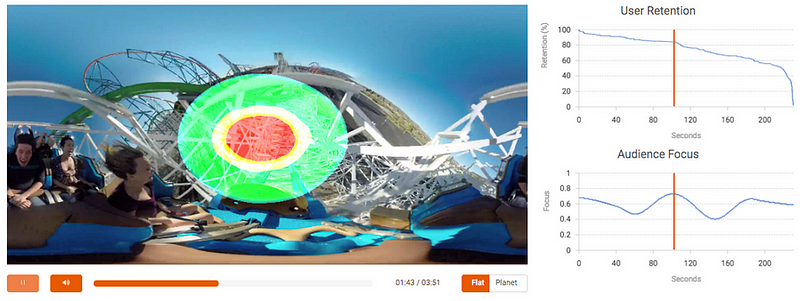
Vrtigo
We all decided the coolest-named startup of the night was Vrtigo, a virtual reality analytics startup in San Francisco. Vrtigo helps 360 video creators and platforms track and improve their content using a combination of qualitative and quantitative tools. And if that sounds premature for such a young industry, it’s not.
CEO Ben Peirce (yes, it’s spelled like that) showed off a VR video experience and resulting analytics that tracked user retention and showed when people “dropped off,” similar to YouTube Analytics. It also offers “Audience Focus,” a heat map to see what people are looking at and how dispersed the video experience is.
In a year or two, as brands start adopting these emerging technologies, Vrtigo will be in a good spot.
Cross-posted to Medium.
The post A glimpse of the VR deluge ahead appeared first on JD Lasica.
]]>The post Dish of the year: Oven-roasted lamb appeared first on JD Lasica.
]]>See the photo above for how it turned out.
Oven-roasted Lamb with Spices
- 2 pounds of lamb (shoulder or leg) cut into 1-inch cubes
- 2 medium onions, chopped
- 5 cloves of garlic
- 2 tablespoons of tomato paste
- 1 tablespoon of ground coriander
- 1 tablespoon of garam masala
- 1 tablespoon of cayenne pepper
- 1 teaspoon of turmeric
- chopped cilantro
- Salt & pepper
- 3/4 cup of water
- 1/4 cup of butter, cut into cubes
- 1/2 cup of nonfat yogurt
This is a curry-style dish made in the oven rather than on the stove.
Mix all the spices and aromatics into a blender or food blender. Combine the mixture with the cubed lamb, and then roast.
Directions
Heat the oven to 300°. Sprinkle the lamb with the salt and pepper. Arrange in a single layer in a baking dish.
Toast the cumin, coriander, garam masala, cayenne and turmeric, in a dry saute pan for a minute or so to bring out the flavors.
Puree the onions, garlic and tomato paste in a food processor. Add the water, then puree again. Add the roasted spices to the puree, then pour the mixture over the lamb. Stir to coat. Scatter butter cubes over the lamb.
Roast the dish uncovered until very tender 2 1/2 to 3 hours. Half an hour before the meat is done, add the yogurt, stirring to combine; continue roasting. Garnish with cilantro and serve.
Serve with rice or potatoes, salad and a red wine, of course.
Enjoy!
The post Dish of the year: Oven-roasted lamb appeared first on JD Lasica.
]]>The post SXSW publishes my gazpacho recipe appeared first on JD Lasica.
]]>But I’m still jazzed that SXSW has decided this year to publish “The Official SXSW 2014 Interactive Cookbook.” Inside the cookbook, you’ll find recipes from over 100 former South by Southwest speakers. The recipes, which span from Eggs Benedict Pasta to Vegetable Jell-O, speak to the creativity and diversity of the SXSW community.
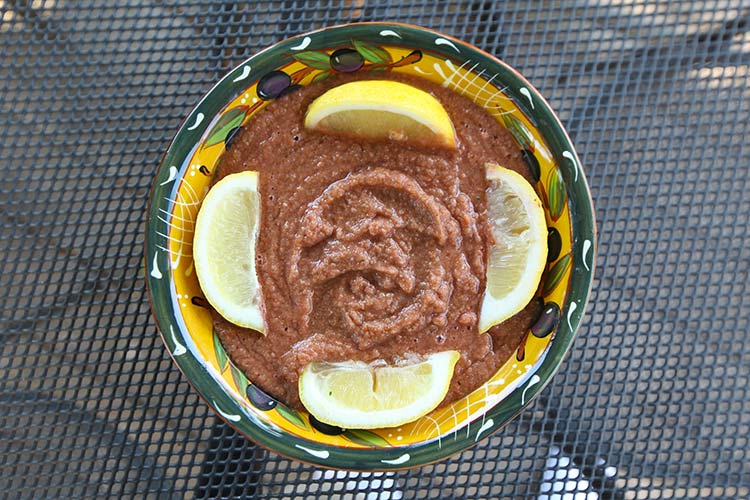
Recipe for Gazpacho de Pleasanton
I contributed my own Gazpacho de Pleasanton (originally Gazpacho de JD) to the cookbook. Here’s the recipe (though you should buy the cookbook — it’s for a good cause!):
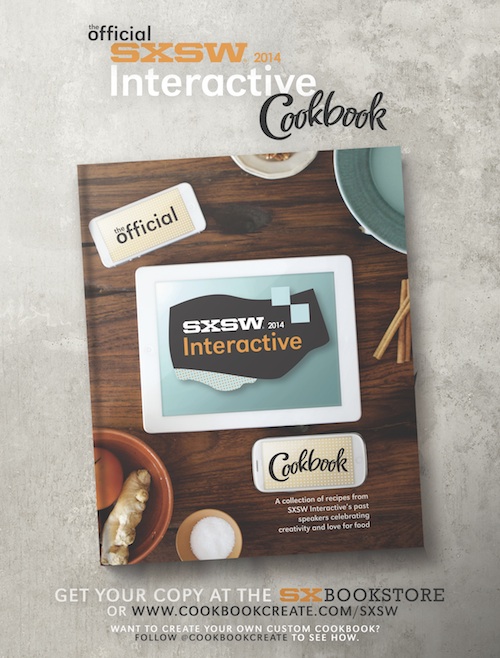 Ingredients
Ingredients
10 big, plump, ripe red tomatoes, cut into chunks
3 cucumbers, peeled, diced
1 red onion, peeled, diced
2 medium green peppers, seeds removed, diced
1 serrano pepper, diced
2 small cans, diced green chiles (approx. 7 oz.)
2 small cans, tomato paste (approx. 6 ox.)
4 tablespoons olive oil
3 tablespoons red white vinegar
1/2 jalapeño pepper (depending on your preference)
1 bunch fresh cilantro, chopped
2 cups bread crumbs
2 teaspoons minced garlic
salt, pepper to taste
lemon wedges as garnish
Directions
Combine tomatoes, cucumbers, onion, green peppers, serrano pepper and
diced green chiles into a blender, followed by the cilantro, garlic,
salt and pepper. The bread crumbs are the last ingredient to add and,
yes, add more than you might think. Blend thoroughly. You’ll likely
need to do three or four batches in a standard blender, so proportion
the ingredients accordingly. Combine each batch into one or two large
serving bowls, cover and refrigerate. Chill thoroughly. Serve with
lemon wedges.
MAKES 12 SERVINGS
Other highlights in the cookbook include Bald Eagle Cookies from Randi Zuckerberg, the Cheezburger Burger Recipe from Ben Huh, and Blacklight Cocktails from Joi Ito.
“The Official SXSW Interactive Cookbook” is available in the SX store during the festival and is also available online. The book was produced by Cookbook Create, a custom cookbook publishing platform
The post SXSW publishes my gazpacho recipe appeared first on JD Lasica.
]]>














